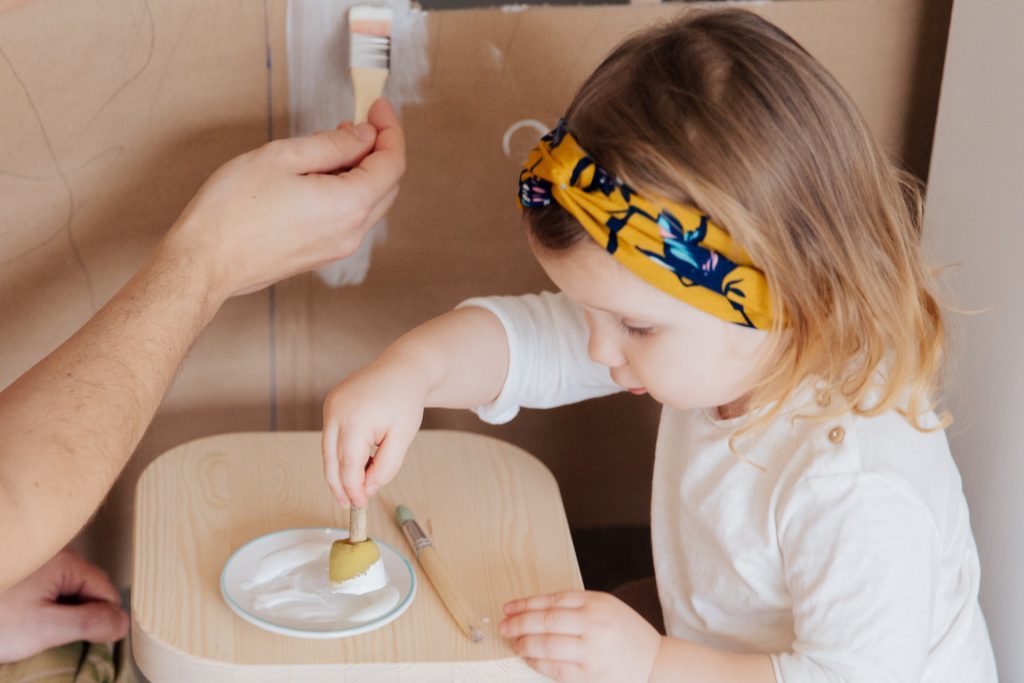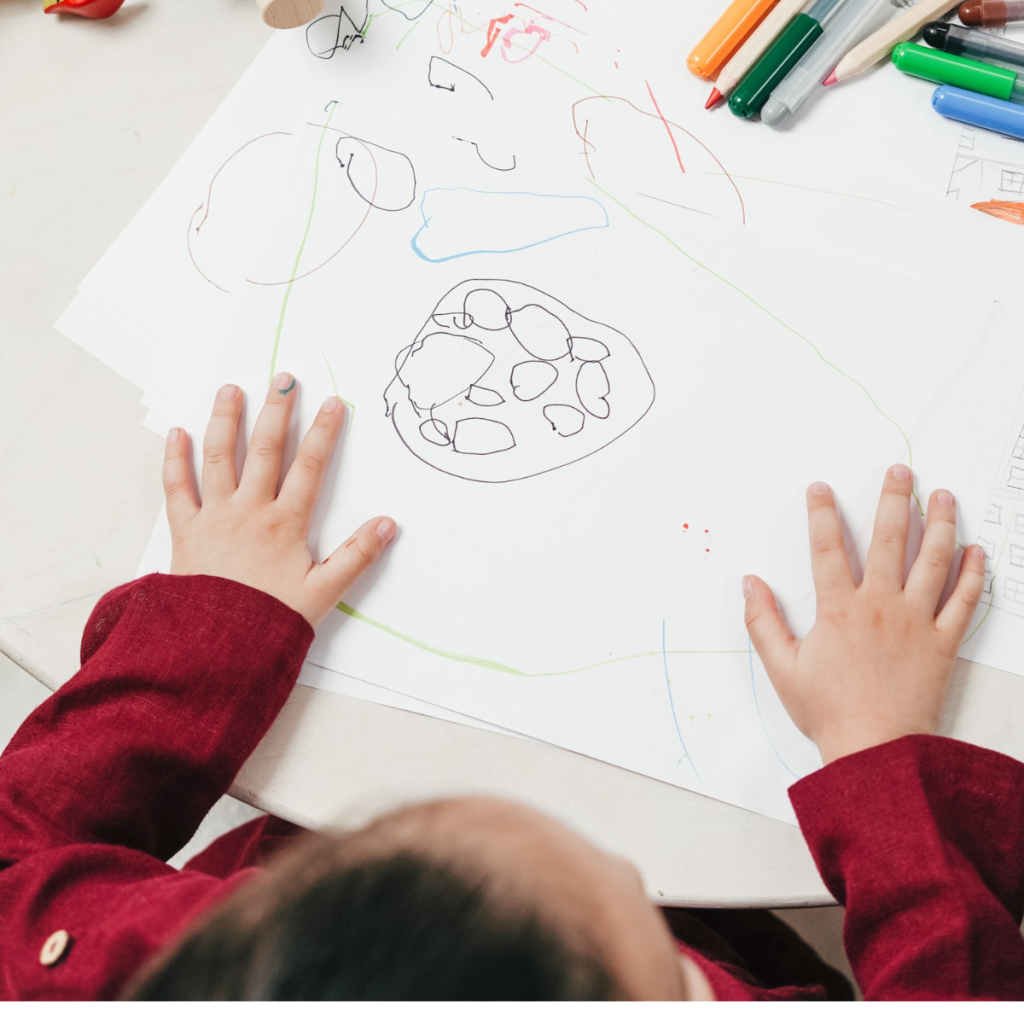Discover effective techniques and tips on how to teach painting to a 2-3 year old child.
How to Teach Painting to a 2-3 Year Old Child
Do you have a little artist in the making? Teaching painting to a 2-3 year old child can be a delightful and enriching experience. Not only does it allow them to explore their creativity, but it also helps develop their cognitive and physical abilities. In this article, we will guide you through the process of introducing your child to the colorful world of painting.
Understanding the Artistic Abilities of a 2-3 Year Old
Before diving into the painting session, it’s crucial to have a grasp of your child’s artistic abilities at this tender age. At 2-3 years old, their cognitive development and physical abilities are still in the early stages of growth, but this doesn’t mean they can’t create amazing art!

Cognitive Development and Art
Art is a powerful tool for cognitive development in young children. Painting helps them understand colors, shapes, and patterns. It also enhances their hand-eye coordination and fine motor skills. When engaged in art, children begin to express their thoughts and emotions, fostering creativity and imagination.
As children explore the world of art, they learn to recognize and differentiate between various colors. They start to understand that mixing different colors can create new shades and hues. This knowledge not only stimulates their cognitive abilities but also opens up a whole new world of possibilities for artistic expression.
Furthermore, engaging in art at a young age helps children develop their spatial awareness. They learn to understand the relationship between objects and their surroundings. This spatial awareness plays a crucial role in their overall cognitive development, as it lays the foundation for their understanding of concepts such as size, distance, and perspective.
Physical Abilities and Art Creation
When it comes to physical abilities, little ones at this age are itching to explore the world around them. Painting provides an opportunity for them to practice their hand movements, strengthen their grip, and improve their finger dexterity. Be prepared for a messy, yet colorful adventure!
As children hold a paintbrush or use their fingers to create art, they are refining their fine motor skills. These skills involve the coordination of small muscles in the hands and fingers, which are essential for tasks such as writing, tying shoelaces, and buttoning clothes. By engaging in art, children are unknowingly preparing themselves for future activities that require precise hand movements.
Moreover, the act of painting allows children to experiment with different strokes and techniques. They learn to control the pressure they apply to the brush or their fingers, resulting in various textures and patterns on the canvas. This experimentation not only enhances their artistic abilities but also strengthens their hand muscles, contributing to their overall physical development.
It’s important to note that at this age, children are still developing their hand-eye coordination. Painting provides an excellent opportunity for them to practice this skill. As they focus on transferring their thoughts onto the canvas, they learn to coordinate their hand movements with their visual perception. This coordination is vital for tasks such as catching a ball, tying shoelaces, and even reading.
Preparing for the Painting Session
Now that we have a good understanding of their abilities, let’s dive into the preparations for the painting session. Setting the right environment and having the proper materials will lay the foundation for a successful and enjoyable art experience.
Choosing the Right Materials
When it comes to painting materials, opt for child-friendly and non-toxic options. Water-based paints are a great choice, as they are easy to clean and safe for your little one. Make sure to have a variety of brushes, sponges, and even their tiny fingers at the ready!
As you select the paints, consider the colors that will spark your child’s creativity. Bright and vibrant hues can inspire their imagination and make the painting session even more exciting. Think about including primary colors like red, blue, and yellow, as well as secondary colors like purple, green, and orange. With a wide range of colors to choose from, your child will have endless possibilities to explore.
Additionally, you may want to provide different types of paper or canvases for your child to paint on. Watercolor paper, for example, is specifically designed to absorb water-based paints and prevent them from bleeding through. Alternatively, a canvas can give your child a more professional feel to their artwork. By offering a variety of surfaces, you can encourage your child to experiment with different textures and techniques.
Setting Up a Safe and Creative Space
Create a designated painting area for your child, preferably covered with a plastic sheet or an old tablecloth to protect surfaces. Lay out their materials in an organized manner, making it easy for them to reach and explore. Safety first!
Consider the lighting in the painting area. Natural light can enhance the colors and make the painting experience more enjoyable. If natural light is not available, ensure that the space is well-lit with artificial lighting to provide a clear view of the artwork.
Furthermore, you can add some extra elements to the painting area to stimulate your child’s creativity. Hang up a few inspiring artworks or photographs nearby to serve as a visual reference. You can also play some soft background music to create a relaxing and artistic atmosphere. These little details can make a big difference in your child’s painting experience.
To make the painting session even more special, consider setting up an easel for your child. An easel not only provides a comfortable and adjustable surface for painting but also adds a touch of professionalism to the art process. Your child will feel like a true artist as they stand in front of their easel, ready to create their masterpiece.
Introducing Painting to Your Child
Now comes the exciting part – introducing painting to your little Picasso! Remember, at this age, experimentation and playfulness are key to keeping them engaged and interested.
Painting is not only a fun and creative activity for children, but it also helps develop their fine motor skills and hand-eye coordination. It allows them to express themselves and explore their imagination in a visual way. So, let’s dive into the world of painting with your child!

First Steps in Painting
Start with some simple painting exercises, like making handprints or finger painting. These activities are perfect for young children as they can easily dip their fingers or hands into paint and create colorful masterpieces. Let them explore the texture and colors while giving them plenty of praise and encouragement. Remember, it’s all about the process, not the end result!
Encourage your child to experiment with different painting techniques. They can use brushes, sponges, or even their fingers to create different effects on the canvas. Show them how to mix colors together to create new shades and hues. This will not only enhance their creativity but also teach them about color theory.
Making it Fun and Engaging
Add a playful twist to painting sessions by incorporating props or music. Use different shapes or objects for stamping, such as leaves, flowers, or even toy cars. This will add an element of surprise and novelty to their artwork. You can also introduce them to different art styles or famous artists by showing them pictures or books during painting sessions. This will broaden their artistic horizons and inspire them to create their own unique style.
Playing their favorite songs in the background can also enhance the creative atmosphere. The rhythm and melody can influence their brushstrokes and color choices, creating a harmonious connection between music and art. Encourage them to paint what they feel when listening to the music, allowing their emotions to guide their artistic expression.
Another way to make painting sessions more engaging is by organizing mini art exhibitions at home. Display their artwork on the walls or create a gallery-like setup. This will not only boost their confidence but also make them feel proud of their creations. You can invite family and friends to admire their artwork and provide positive feedback, further motivating them to explore their artistic talents.
Remember, the most important thing is to create a nurturing and supportive environment for your child’s artistic journey. Let them freely express themselves through painting and encourage them to embrace their unique style. With your guidance and encouragement, your little Picasso will continue to grow and thrive in the colorful world of art!
Guiding Your Child’s Artistic Journey
As their artistic journey progresses, you have the important role of guiding and nurturing their creativity. Here are a few tips to help you on this colorful adventure:
Encouraging Creativity and Expression
Provide your child with open-ended prompts and encourage them to express themselves through art. Instead of giving step-by-step instructions, ask them questions like, “What colors do you feel like using today?” or “What story does your painting tell?” Let their imagination soar!
When you encourage your child’s creativity and expression, you are fostering their ability to think outside the box. Art allows them to explore different perspectives and ideas, helping them develop critical thinking skills. By asking open-ended questions, you are giving them the freedom to explore their own thoughts and emotions through their artwork.
Furthermore, encouraging creativity and expression through art can also boost your child’s self-esteem. When they see their ideas come to life on the canvas, they feel a sense of accomplishment and pride. This positive reinforcement can motivate them to continue exploring their artistic abilities and develop their own unique style.
Dealing with Frustrations and Mess
Messiness is simply a part of the painting process, so embrace it! Show your child that it’s okay to make mistakes and that art is all about experimenting. Offer gentle guidance when they feel frustrated, reminding them that the joy is in the journey, not the end result.
When your child feels frustrated or discouraged with their artwork, it’s important to provide them with a supportive and understanding environment. Remind them that even professional artists make mistakes and that these mistakes can often lead to new and unexpected discoveries. Encourage them to view their frustrations as opportunities for growth and learning.
In addition, embracing the messiness of art can teach your child valuable life skills, such as resilience and adaptability. By allowing them to explore different techniques and materials, you are teaching them how to navigate through challenges and find creative solutions. These skills will not only benefit them in their artistic journey but also in other aspects of their lives.
Remember, the process of creating art is just as important as the final product. By guiding your child’s artistic journey with encouragement, open-ended prompts, and a positive attitude towards mistakes, you are helping them develop a lifelong love for art and creativity.
Developing Painting Skills Over Time
As your child grows, their painting skills will naturally evolve. Encourage their progress by introducing new techniques and concepts that keep their curiosity alive.
Progressing from Finger Painting to Brushes
As their fine motor skills develop, gradually introduce different brushes. Start with larger ones and move on to smaller sizes. This transition will spark their interest and improve their control over the paint, allowing for even more detailed creations.
Introducing New Techniques and Concepts
Once they have mastered the basics, expand their art vocabulary by introducing new techniques such as splattering, stamping, or even mixing colors. Discuss concepts like warm and cool colors, and watch their understanding and love for art blossom!
Teaching painting to a 2-3 year old child is a unique and rewarding experience. By understanding their abilities, creating a fun and engaging environment, and guiding their artistic journey, you’re not only fostering their creative skills but also providing them with a lifelong love for self-expression. So grab those brushes, let the paint flow, and watch their imagination take flight!



